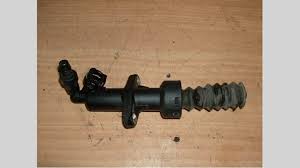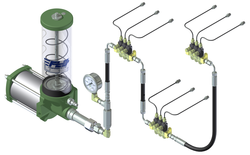In today’s world, there is an increasing need for materials that not only possess exceptional strength but also promote sustainability and environmental consciousness. One such material that has gained significant attention in various industries is PA66 GF35 composites. These composites, made from a blend of polyamide (PA) and glass fiber (GF), offer a unique combination of superior mechanical properties and eco-friendly characteristics. This article aims to delve into the environmental benefits of PA66 GF35 composites, exploring how their production and usage contribute to a more sustainable future. By understanding the advantages of these innovative materials, we can pave the way for greener manufacturing processes and reduce our carbon footprint significantly.
Understanding the Environmental Impact of Traditional Materials
PA66 GF35 composites are gaining popularity in various industries due to their remarkable strength and sustainability. These composites, made up of polyamide 66 (PA66) reinforced with 35% glass fiber (GF), offer an excellent alternative to traditional materials like metals and plastics. When compared to metals, PA66 GF35 composites have a significantly lower environmental impact throughout their entire lifecycle. The production of metals requires extensive mining activities, which not only deplete natural resources but also cause habitat destruction and pollution. In contrast, the manufacturing process of PA66 GF35 composites involves less energy consumption and emits fewer greenhouse gases, making them a more environmentally friendly choice.
Furthermore, when compared to traditional plastics, which are derived from fossil fuels and contribute to carbon emissions during production and disposal, PA66 GF35 composites offer superior sustainability credentials. These composites possess excellent durability and resistance to wear and tear, resulting in longer product lifespans. This longevity reduces the need for frequent replacements or repairs, thereby minimizing waste generation. Moreover, at the end of their life cycle, PA66 GF35 composites can be recycled or reused as raw materials for new products instead of ending up in landfills or incinerators like many plastic materials do.
The Eco-Friendly Features of PA66 GF35 Composites
PA66 GF35 composites offer a range of eco-friendly features that make them a sustainable choice for various applications. One key environmental benefit of these composites is their high strength-to-weight ratio. This means that they require less material to achieve the same level of strength as traditional materials, resulting in reduced resource consumption and waste generation during manufacturing.
Additionally, PA66 GF35 composites are known for their durability and resistance to corrosion, which extends their lifespan and reduces the need for frequent replacements. This not only saves resources but also reduces the overall environmental impact associated with the production and disposal of composite materials.
Furthermore, these composites are recyclable, allowing them to be reused or repurposed at the end of their life cycle. Recycling PA66 GF35 composites helps reduce landfill waste and conserves energy compared to producing new materials from scratch. Overall, the eco-friendly features of PA66 GF35 composites contribute to a more sustainable and environmentally responsible approach in various industries.
Advantages for Sustainable Industries and Applications
One of the key advantages of sustainable industries and applications is the reduced environmental impact. Sustainable materials, such as PA66 GF35 composites, offer a way to minimize resource depletion and waste generation. These composites are made from recycled or renewable materials, reducing the need for virgin resources and minimizing the carbon footprint associated with their production.
Another advantage is improved energy efficiency. Sustainable industries often prioritize energy conservation and strive to use resources more efficiently. PA66 GF35 composites have been shown to have excellent mechanical properties while being lightweight, which can contribute to lower energy consumption during transportation and usage. This not only helps in reducing greenhouse gas emissions but also leads to cost savings for businesses by lowering their energy bills.
Furthermore, sustainable industries and applications can drive innovation and create new business opportunities. As companies increasingly adopt sustainability practices, they are forced to find creative solutions that are environmentally friendly. This drive towards sustainability encourages research and development of new technologies and processes that can benefit multiple industries. By embracing sustainability, businesses can position themselves as leaders in their respective sectors while also contributing positively towards a greener future.


